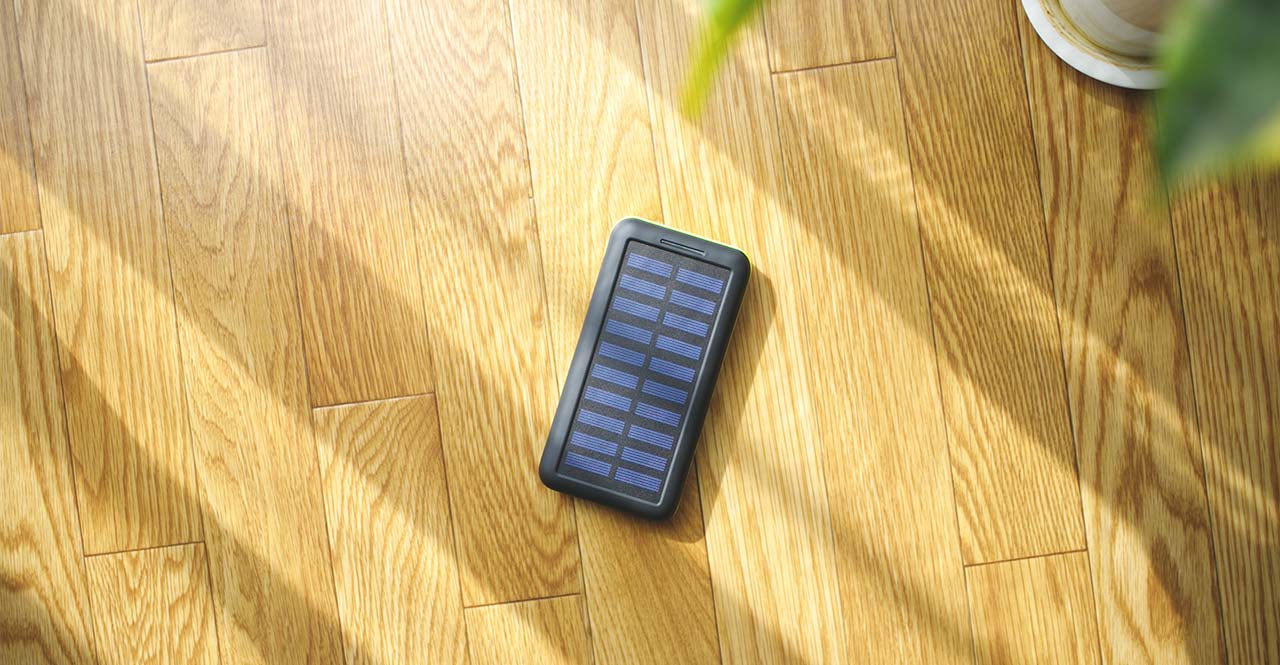Published: October 31, 2022
Modified: December 12, 2024
Table of Contents
Buck DC/DC Converter with Ultra-low Current Consumption?
Buck Converter Designed Exclusively for Energy Harvesting?
With Built-in Reverse Current Protection!
Ultra-low Starting Power!
Efficient Charging Achieved by Maximum Power Point Control?
Buck-boost DC/DC Achieving Low Current Consumption & Low-voltage Operation?
This story is about power management ICs that operate IoT devices by energy harvesting.
On a day with mild sunshine, a third-year fresh employee, with an annoyed face, comes to a veteran staff member A.
Help me, Senpai! Series Vol. 1
IoT for Energy Harvesting:
Solar Panel Can’t Drive System till Morning…
 Rookie B
Rookie B
Atsuo senpaaaaai! Please, please help me!
I am considering an IoT device powered by solar cells but cannot make it.
*Senpai: A Japanese-style title to show respect to those older than oneself, especially used in organizations such as companies, schools, etc. It sometimes implies that the psychological relation between the two is closer than that between a boss and a subordinate.
 Senpai A
Senpai A
Hi Bunta! Huh? What’s wrong?
 Rookie B
Rookie B
I made the system with an indoor-use solar panel, a diode for reverse current prevention, a secondary battery, sensors and an MCU with a built-in BLE.
I want the system to operate for 24 hours but it sometimes fails to do so. Sometimes it doesn’t collect data when lights are turned off at night.
 Figure 1: First System Block Diagram Bunta Constructed
Figure 1: First System Block Diagram Bunta Constructed
 Senpai A
Senpai A
I don’t think it has so many problems.
How about the solar panel’s ability to generate power?
Replacing it with one which can generate enough power to drive the system till morning will solve the problem, right?
 Rookie B
Rookie B
I can’t choose a solar panel with more cells or larger one.
That would make the system larger and larger. Plus, the cost would also increase…
 Senpai A
Senpai A
The system has an 8-cell indoor-use solar panel, right? Then, the output voltage is 4.4 V. Even if voltage drop by the diode is taken into account, 4.1 V seems to be enough to charge the secondary battery…
Well, by the way, it seems that the system doesn’t have any power management IC. As the system uses a solar panel, the amount of generated power will vary, and so will the output voltage. It’s impossible to charge efficiently without power management ICs like linear or switching regulators, right?
 Rookie B
Rookie B
Yes. You mean buck switching regulators, because LDO regulators are too inefficient for the system.
However, I think the loss from large current consumption by a DC/DC is greater than that without it.
Also, it requires an external inductor, which increases cost. I can't imagine the advantages versus the disadvantages…
 Senpai A
Senpai A
You mean that your problem will be solved by a buck converter which can efficiently charge the secondary battery with low current consumption.
Buck DC/DC Converter with Ultra-low Current Consumption?
 Rookie B
Rookie B
Of course, I also tried to find a buck DC/DC converter with low current consumption.
For example, this RP511, with current consumption of 300 nA (0.3 µA) at load, seems to be designed for use in IoT devices.
 Figure 2: Block Diagram Using RP511 instead of Diode in System Shown in Figure 1
Figure 2: Block Diagram Using RP511 instead of Diode in System Shown in Figure 1
 Senpai A
Senpai A
It’s so-called nano-power! It certainly has low current consumption, and products like this are becoming more prevalent, right?
 Rookie B
Rookie B
Yes, but… it doesn’t seem to work well.
The output voltage of the solar panel decreases as soon as the RP511 starts its operation.
The system constantly operates with a voltage near the UVLO* voltage, which prevents efficient charging operation. In the end, neither diodes nor converters realized the operation I had expected…
* UVLO: abbreviation for Under Voltage Lockout. A circuit which prevents malfunction of the system by stopping its operation at low voltage.
Buck Converter Designed Exclusively for Energy Harvesting?
 Rookie B
Rookie B
I thought using an indoor-use solar panel could operate a system even at night by charging the secondary battery with stable indoor light, but is this attempt impossible to achieve…?
Using coin batteries require additional work for replacement, and the problem can be solved by solar cells, but…
 Senpai A
Senpai A
I think that buck converter is put in the back of the secondary battery rather than before it.
How about using this one? This R1800K has current consumption of 144 nA (0.144 µA), which is lower than that of the RP511 by a factor of two or more, and is designed for energy harvesting application.
 Figure 3: Block Diagram Using R1800K Instead of RP511 in Figure 2
Figure 3: Block Diagram Using R1800K Instead of RP511 in Figure 2
With Built-in Reverse Current Protection!
 Senpai A
Senpai A
The first point is that the R1800K has a built-in reverse current protection circuit. Thanks to that, voltage drop doesn’t occur, and an external capacitor isn’t necessary.
 Rookie B
Rookie B
It may sound beneficial to be able to save the 0.3-V voltage drop that the diode consumed.
Ultra-low Starting Power!
 Senpai A
Senpai A
Another benefit of the R1800K is that it can start operation even in a dimly lit room thanks to its starting power of just 720 nW (0.72 µW).
Conventional converters with ordinary current consumption cannot work with the power a solar panel generates under a dimly lit environment.
 Rookie B
Rookie B
I got the point! Even if lights are switched off, it can operate with sunshine coming through the window during the day.
That’s amazing!
 Senpai A
Senpai A
Besides, it can operate even at night. The room doesn’t become totally dark, right?
It operates with 20 to 30 Lx illuminance, so it seems to be OK if there is an illuminance level an all-night light produces, such as a dimly lit bar counter.
 Rookie B
Rookie B
Ha ha, brightness in a bar counter depends on the shop, though.
Anyway, it can operate even in gloomy places, right!?
 Senpai A
Senpai A
Yes, yes! What is most important, the R1800 can control its maximum power point.
The converter operates at the maximum power point of a solar panel, which enables the IC to charge the secondary battery most efficiently.
Efficient Charging Achieved by Maximum Power Point Control?
 Rookie B
Rookie B
What on earth is maximum power point?
 Senpai A
Senpai A
The amount of power solar panels generate varies in accordance with the illuminance. The maximum power point refers to the peak of the generated power. As the range of the peak is narrow, the amount of power generation will drop largely if the converter operates at the point even slightly out of the range.
This is why the amount of power solar panels for outdoor use generate is unstable, because it heavily depends on the weather or the movement of the sun.
Although indoor lights are relatively stable compared to outdoor lights, they are turned off during the lunch break and are sometimes shaded by the movement of people, right? These situations cause extreme decrease in the amount of generated power and fail to provide current that is at least as much as the quiescent current of the converter.
 Senpai A
Senpai A
The maximum point control stops the operation of the converter when the solar panel doesn’t generate enough power. The converter will never consume power fruitlessly if it doesn’t operate to provide at least some charge for the battery , right? The R1800K doesn’t operate meaninglessly, in addition to its ultra-low power consumption.
I guess that the reason the RP511 could not charge the secondary battery well is because it didn’t have this maximum power point control.
 Rookie B
Rookie B
Ah huh, because of the lack of the maximum power point control function, the RP511 failed to efficiently extract power from the solar panel.
I see… Great!
 Senpai A
Senpai A
Let me tell you another converter.
There is a buck-boost DC/DC converter which is used at the output of the secondary battery.
 Rookie B
Rookie B
Is there such a converter like that, a buck-boost type with ultra-low current consumption?
While there are many buck converters like the RP511, I hear it is difficult to control the switching of the buck-boost converters because they need to switch operation mode between buck and boost. I looked for them but couldn’t find a good one.
Buck-boost DC/DC Achieving Low Current Consumption & Low-voltage Operation?
 Senpai A
Senpai A
That’s because it is a unique IC. Its name is the RP604. This DC/DC converter consumes only 300 nA (0.3 µA) during operation, which is the same current consumption as that of the RP511.
Plus, it can start from 1.8 V, while most ordinary DC/DC converters start operating from 2.4 V.
 Rookie B
Rookie B
Low voltage operation, low current consumption, and buck-boost type…. How wonderful!
 Senpai A
Senpai A
Adding this IC at the output of the secondary battery will enable the system to use the battery capacity of the secondary battery because its discharge end voltage is 1.8 V, right? It will prolong the operating time of your IoT device. I will talk about the RP604 in detail at another time. Anyway, get a sample and try using it!
 Rookie B
Rookie B
Yeah, I’ll try it! Thank you very much, Senpai!
 Figure 4: Block Diagram with RP604 Added to System in Figure 3
Figure 4: Block Diagram with RP604 Added to System in Figure 3
For More Details on R1800K
For More Details on RP604
For More Details on RP511
*A PDF file will open if you click the link.
Click here for more details on the RIOT, an evaluation board in which the R1800K and the RP604 are used. By clicking the link, an introductory page will open.
Click here for more details on our products for IoT devices. By clicking the link, a special page will open.
Afterword
On an ongoing basis, we are going to write introductory articles to help you use our products. As we will make them easy to read, we hope you read through them.
If you have questions, please let us know.






Comment